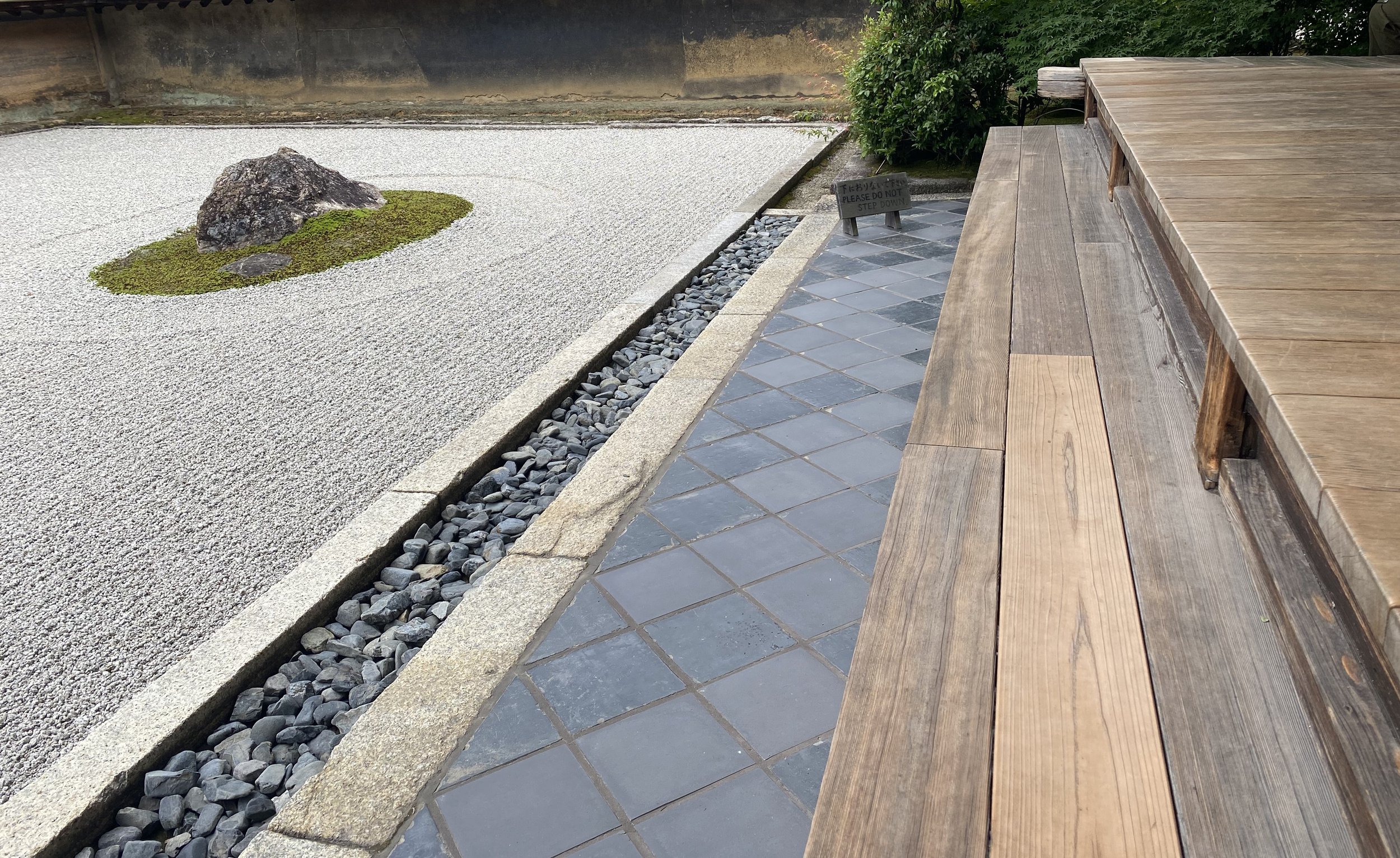Pilgrimage to Ryōan-Ji
A relatively compact Japanese Garden at the Huntington Gardens in Pasadena Los Angeles made a lasting impression on me at the age of 24, whilst on my OE.
As I went on to do post graduate studies in landscape architecture, I digested books on Japanese Zen gardens and their details (though restraining myself from trying to make literal gardens like the fad that swept post-war suburban New Zealand). Whilst it took me several decades to visit Japan, I am happy to report that I am recently returned from a five-day visit.
I was fortunate to have experienced Tokyo- the world’s largest city with its multitude of shopping and eating options- as well as Kyoto, two hours south on the speeding bullet train.
Naka-Meguro, Tokyo, Japan Image credit @Jenna Neal
Kyoto, a city of 1.4million, was once the old imperial capital of Japan, and is festooned with temples and associated gardens. Due to its inland location, the city was largely unimpacted by the bombing of WWII, although now, it has expanded to take on a modern ‘western city’ look. I tempered potential burnout by choosing to visiting Ryōan- ji (Dragon at Peace) Zen Buddhist temple first in my schedule. It is Japan’s most famous rock garden and has had significant influence on generations of westerners from Frank Lloyd Wright to David Hockney.
image Credit @kazuo513
Like a good design pilgrim, I did my research, and headed off early to the northwestern edge of the city’s foothills, arriving at the temple prior to opening in an effort to avoid the crowds. There were no big entrance gates or expansive lawns - all was largely concealed under a forest canopy.
I wandered along a stone path, past a modest ticket cabin, and then past a small stone edged lake, complete with a little island. The path followed the curve of the lake and then was intercepted by a different path in straight ‘sections’, leading into a zig zag pattern.
This zig-zag path passed several trees, supported by poles, before ending at a very wide, ramped, flight of steps. Alert now to this carefully laid out procession: I climbed the tree canopied flight of stairs to my next encounter: a low and largely horizontal building.
Image Credit - Garth Falconer
This, at last, was the temple, or “Hojo”. The darkened timber structure delicately embraced and extended into the space around it through a series of screens and openings. Taking off my shoes, I entered, and was guided through the space, winding around, and opening out to a framed walled courtyard (10 m x 25m), occupied by an austere arrangement of upright rocks placed on corrugated raked white gravel.
This courtyard was not intended for gathering, nor dining, nor recreating, but was devoted to contemplation of a higher order. Designed and laid out in the 15th century, this is one of the finest examples of “Karesansui “ - or dry garden, that has come to epitomise classical Japanese garden design.
Image Credit - Garth Falconer
I sat enjoying the space, momentarily part of the framed background then continued around the screened pavilion as there were other devices to ‘take in’: trees with exposed root structures, pergola framed shelters, and intricate paving. Also subtly placed, was a water basin with a bamboo feed pipe and a ladle. Called a “Tsukabai “, it is for the ritual washing of hands. On its top, heavily inscribed like a coin, in four characters was the directive: “I learn only that I am contented”.
At Ryōan -ji, the surrounds, the paths, the temple and gardens, were to designed to enhance our appreciation of our place in the universe. All this made for a pretty compelling experience and much reflection. Then, as the hordes of local school buses and European tourists invaded the peace, I hoped that they got as much out of their visits as I had.
Author Garth Falconer



